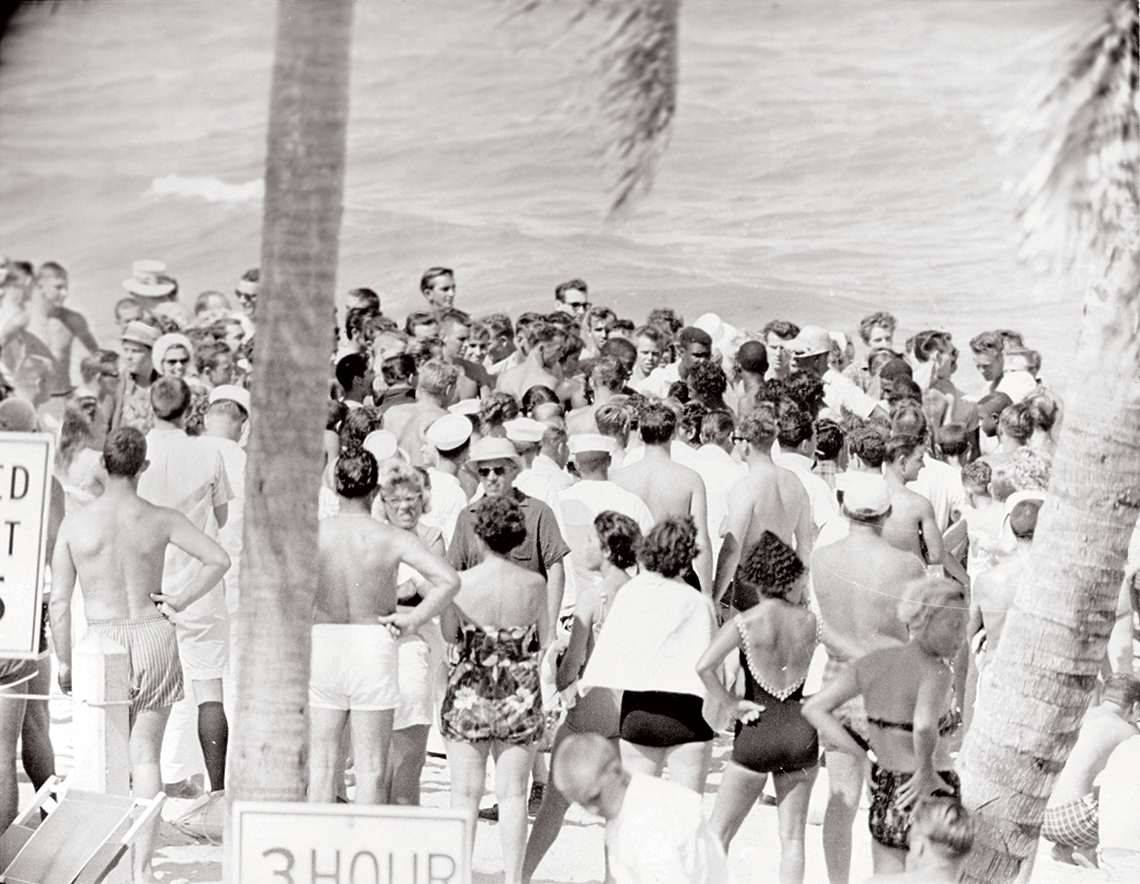
There was a time in the earliest days of our city when blacks and whites lived and worked together, and there were no demarcation lines for “this side of the tracks.”
There was no “northwest section.” There was no whites-only beach.
A photo from a 1911 Christmas Day fish fry on the beach shows a crowd of black and white revelers enjoying the day together. Descriptions of that party say the fish were fried in huge pots, there were bins full of fruit, and a black string band played. We are also told that a reception line formed and everyone greeted one another.
How about that?
During those days, blacks worked for the Stranahans, Hugh T. Birch and John MacGregor Adams, all well-known pioneers. Other black settlers carved out their own homesteads and planted their own crops, side-by-side with white farmers.
From newspaper archives comes this quote from Isadore Mizell, whose family arrived in 1910:
“This was a great farming place, and we were in the farming business, raising tomatoes,” said Mizell. “There were a lot of black people who would come down [from North Florida and Georgia] during the farm season and help raise crops… Some grew cabbage and some peppers… Now nobody owned [anything] when we came down here. We went anywhere we wanted to. We would just go out and clean up a place and plant tomatoes… People never said anything about it.”
One black nurse, Aunt Sallie Wright, lived in the downtown Broward Hotel. Cornelia Bobo Williams, the first cook for Ivy Stranahan, lived with her husband nearby on Brickell Avenue.
When there were so few people around to get this community started, and much of the economy was based on farming, where was the need for separation of the races? After all, this was an area that the Civil War totally bypassed. While that war raged, our area was the land of the Seminoles. A few dozen earlier settlers fled after the Cooley incident in 1836.
And of course, without plantation owners, slavery was not a factor in what would become Fort Lauderdale.
The blacks who worked in hotels or as farmhands didn’t earn as much as whites. But they were paid, and they went home to their own households. And with the help of people like Ivy Stranahan, lobbied by her second cook Annie Reed, they built the first “colored school.” At first, the schools weren’t as good as the white schools – for a long time, Dillard High only went up to ninth grade – but they had something to build on.
Thriving music clubs sprang up in the black community in the ‘40s and ‘50s: the Two Spot, Clover, Down Beat, and Tino’s Bar. But there were also thriving businesses everywhere you looked. And most of them sprouted years earlier.
The irony is that what became a segregated part of town was originally formed by black residents. With a growing Fort Lauderdale, black citizens were working everywhere – building our first courthouses, working in shipping and hotels and canning warehouses, picking vegetables. And they were returning to their own neighborhood filled with businesses they owned. Blacks from the Bahamas also came to settle.
According to Deborah Work’s research in My Soul Is a Witness, businesses began forming as far back as 1910. By then, there was a black employment agency, grocer, shoemaker, restaurant, seamstress and other enterprises.
A decade later, contractors built 56 new cottages in the northwest section, and Dr. James Sistrunk arrived to become the community’s first doctor. In 1925, T.S. Cobb founded a successful mattress factory named Bedd-O-Rest, which also made draperies, slipcovers, bedspreads and box springs.
During those years, black businesses operated on both sides of the tracks. But segregation, which had been a stranger here, was a fact of life by 1927.
Fueled by fears that blacks would hamper the growing tourist trade, the city enacted laws restricting black homes and businesses to the northwest section in a system of quadrants. The line was drawn from Andrews Avenue west, while Broward Boulevard divided north and south.
Blacks who owned homes or businesses on the east side were forced to sell and relocate. White-owned businesses in the black section moved out.
In short order, black and white beaches were delineated, the whites getting the choice locations. Curfew laws were also established: Unless black citizens had a special work permit, they could not cross into the white section after 8 p.m.
After years of free-flowing interaction between the races, we sadly joined the rest of the South – segregated since the 1800s.











